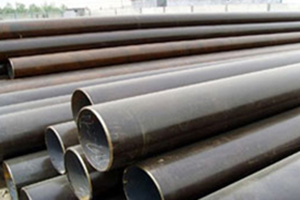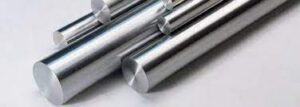Introduction
Magnetic attraction, a phenomenon that has fascinated humanity for centuries, becomes a compelling topic in the realm of materials. Among them, the enigmatic 410 stainless steel takes center stage as we explore the intriguing question: Is magnetic response a characteristic of 410 stainless steel? In this comprehensive article, we delve into the intricacies of magnetic response, its relationship with stainless steels, and unravel the factors that influence the magnetic behavior of 410 stainless steel.
1. The Magnetic Enigma: A Historical Perspective
 Magnetic attraction, observed since ancient times, has intrigued scientists and enthusiasts alike. In the modern era, materials like stainless steels, including the enigmatic 410 stainless steel, bring forth a unique magnetic mystery.
Magnetic attraction, observed since ancient times, has intrigued scientists and enthusiasts alike. In the modern era, materials like stainless steels, including the enigmatic 410 stainless steel, bring forth a unique magnetic mystery.
2. Unveiling 410 Stainless Steel: Composition Recap
The composition of 410 stainless steel includes:
- Chromium (Cr): 11.5% – 13.5%
- Carbon (C): 0.08% – 0.15%
- Manganese (Mn): Up to 1.0%
- Silicon (Si): Up to 1.0%
- Phosphorus (P): Up to 0.04%
- Sulfur (S): Up to 0.03%
This composition influences the alloy’s magnetic response.
3. Magnetic Response Demystified: Paramagnetism and Ferromagnetism
Magnetism is categorized into paramagnetism and ferromagnetism:
- Paramagnetism: Materials weakly attracted to a magnetic field.
- Ferromagnetism: Materials that exhibit a strong magnetic attraction and can retain magnetism.
4. The Dance of Electrons: Understanding Magnetic Behavior
Magnetic response emerges from the arrangement of electrons in atoms:
- Unpaired Electrons: Unpaired electrons align with an external magnetic field, causing a material to exhibit magnetic behavior.
- Paired Electrons: Paired electrons cancel out magnetic effects, resulting in non-magnetic behavior.
5. Factors Influencing Magnetic Response
The magnetic behavior of 410 stainless steel is influenced by:
- Composition: Elements like chromium and carbon impact the arrangement of electrons.
- Microstructure: The presence of different phases can affect magnetic response.
- Heat Treatment: Altering the microstructure through heat treatment can change magnetic behavior.
6. Magnetic Applications and Implications
Magnetic properties find applications in various industries:
- Magnetic Alloys: Alloys with controlled magnetic response are used in electronics and industrial applications.
- Magnetic Sensing: Magnetic materials are used in sensors and detectors.
7. The Corrosion-Magnetism Nexus: A Balancing Act
The relationship between corrosion resistance and magnetism:
- Corrosion Resistance: Non-magnetic stainless steels like austenitic grades often exhibit superior corrosion resistance.
- Magnetism and Corrosion: Magnetic stainless steels like 410 can have compromised corrosion resistance due to their microstructure.
8. Expert Insights: Navigating the Magnetic Terrain
Experts offer insights into the magnetic behavior of 410 stainless steel:
- Microstructure Control: Altering the microstructure through heat treatment can influence magnetic response.
- Practical Considerations: Understanding the balance between magnetic behavior and other properties is crucial for selecting the right stainless steel grade.
9. Mastery and Understanding
 Understanding magnetic response empowers engineers and designers:
Understanding magnetic response empowers engineers and designers:
- Material Selection: The knowledge of magnetic behavior guides the selection of materials for specific applications.
- Functional Designs: Magnetic properties can be harnessed for functional designs.
10. Frequently Asked Questions (FAQ)
Q1: Is 410 stainless steel magnetic?
A1: Yes, 410 stainless steel is magnetic due to its microstructure and composition.
Q2: How does the magnetic response of 410 stainless steel compare to other stainless steel grades?
A2: 410 stainless steel is magnetic, while some other stainless steel grades, like austenitic stainless steels, are non-magnetic.
Q3: Can the magnetic response of 410 stainless steel be altered?
A3: Yes, through heat treatment and microstructure control, the magnetic behavior of 410 stainless steel can be influenced.
Q4: Are there applications where the magnetic response of 410 stainless steel is advantageous?
A4: Yes, magnetic properties can be advantageous in applications like magnetic sensors and certain industrial components.
Q5: Does the magnetic response of 410 stainless steel impact its corrosion resistance?
A5: Yes, the microstructure that gives rise to magnetic behavior can compromise the corrosion resistance of 410 stainless steel compared to non-magnetic grades.
Conclusion
The magnetic response of 410 stainless steel intertwines composition, microstructure, and material behavior, resulting in a captivating aspect of its nature. From its unyielding magnetic attraction to the delicate interplay of electrons, understanding the magnetic behavior enriches our comprehension of this alloy’s properties. Whether harnessed for functional designs or considered in material selection, the magnetic enigma of 410 stainless steel is a vital thread in the fabric of materials science and engineering.
